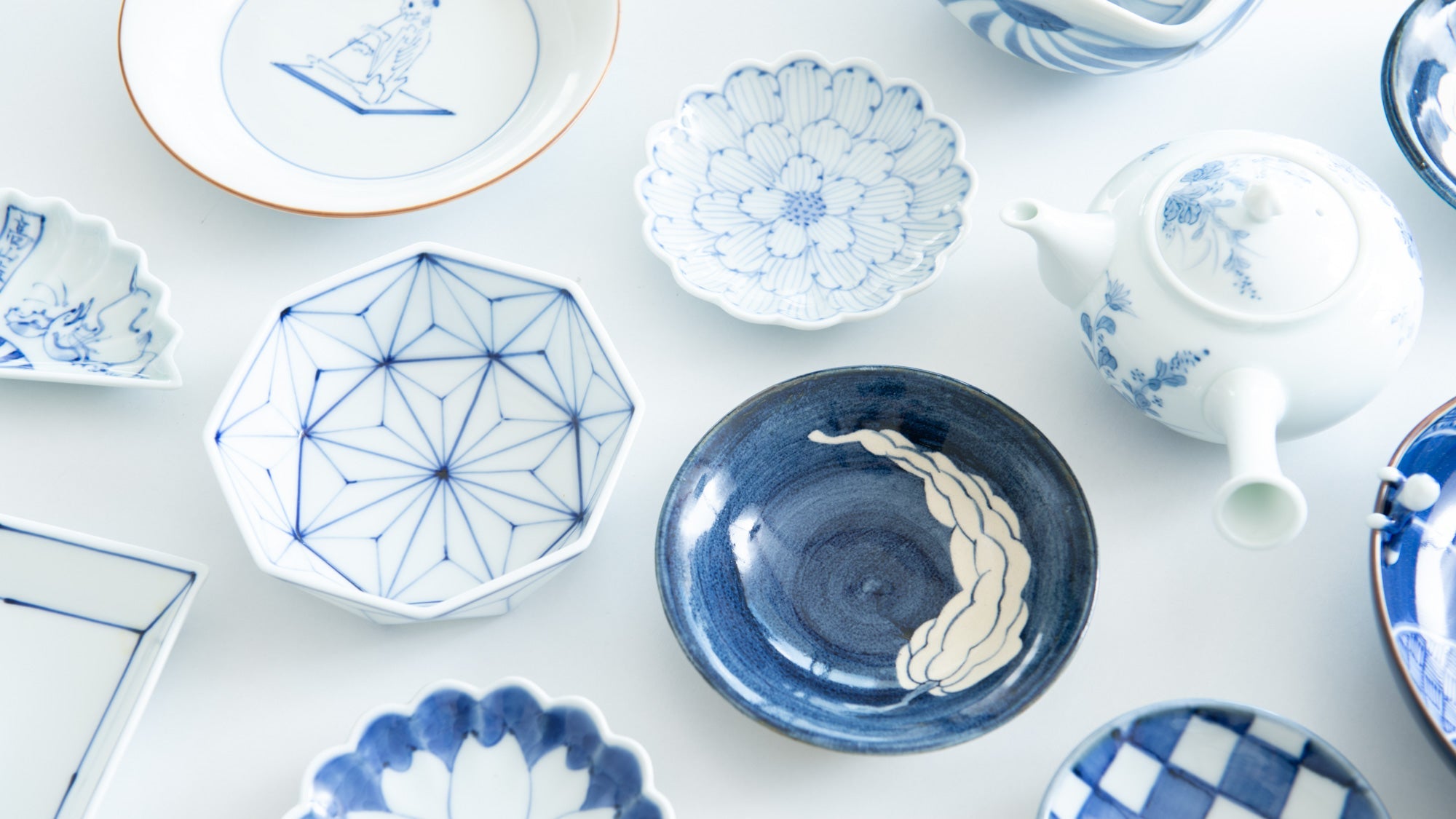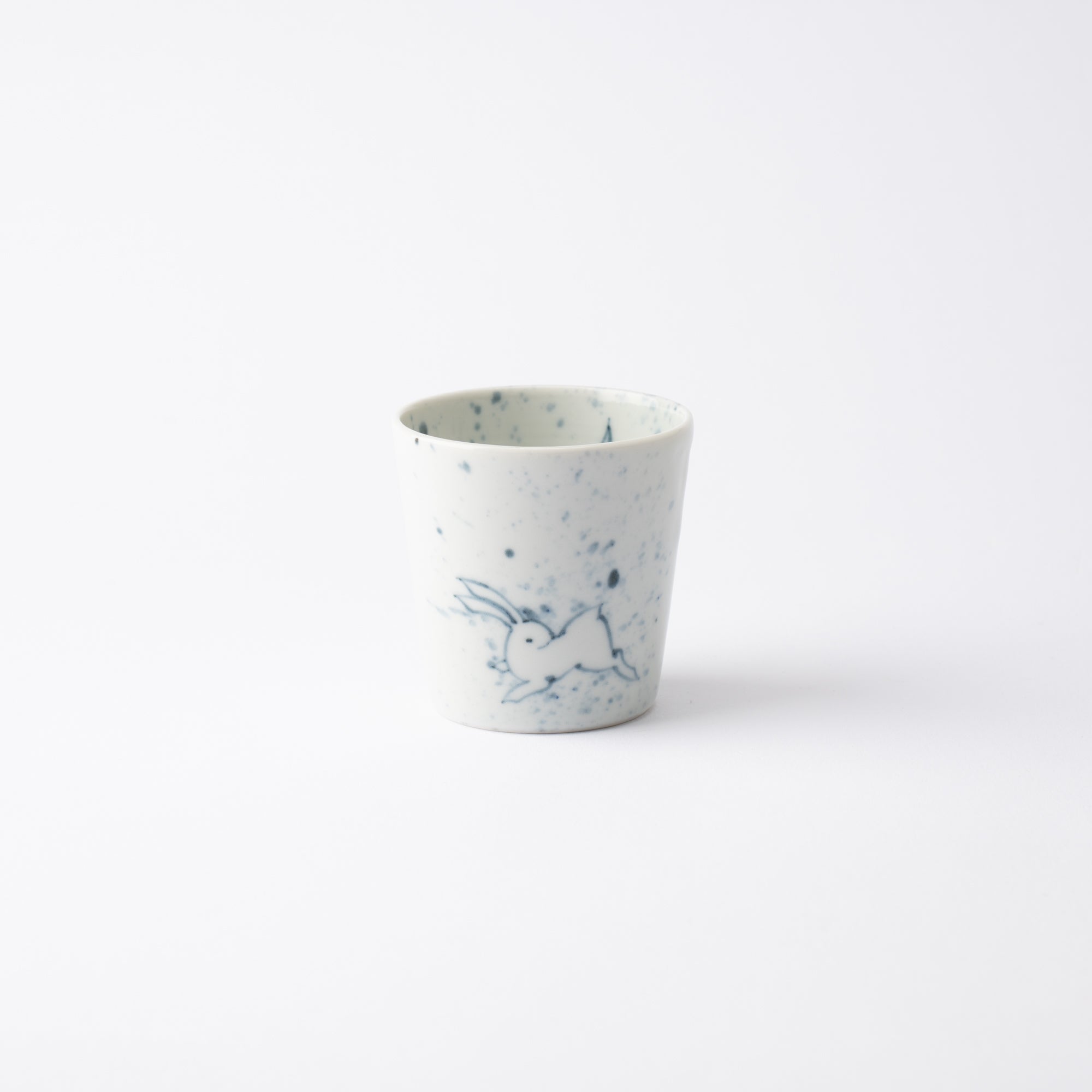

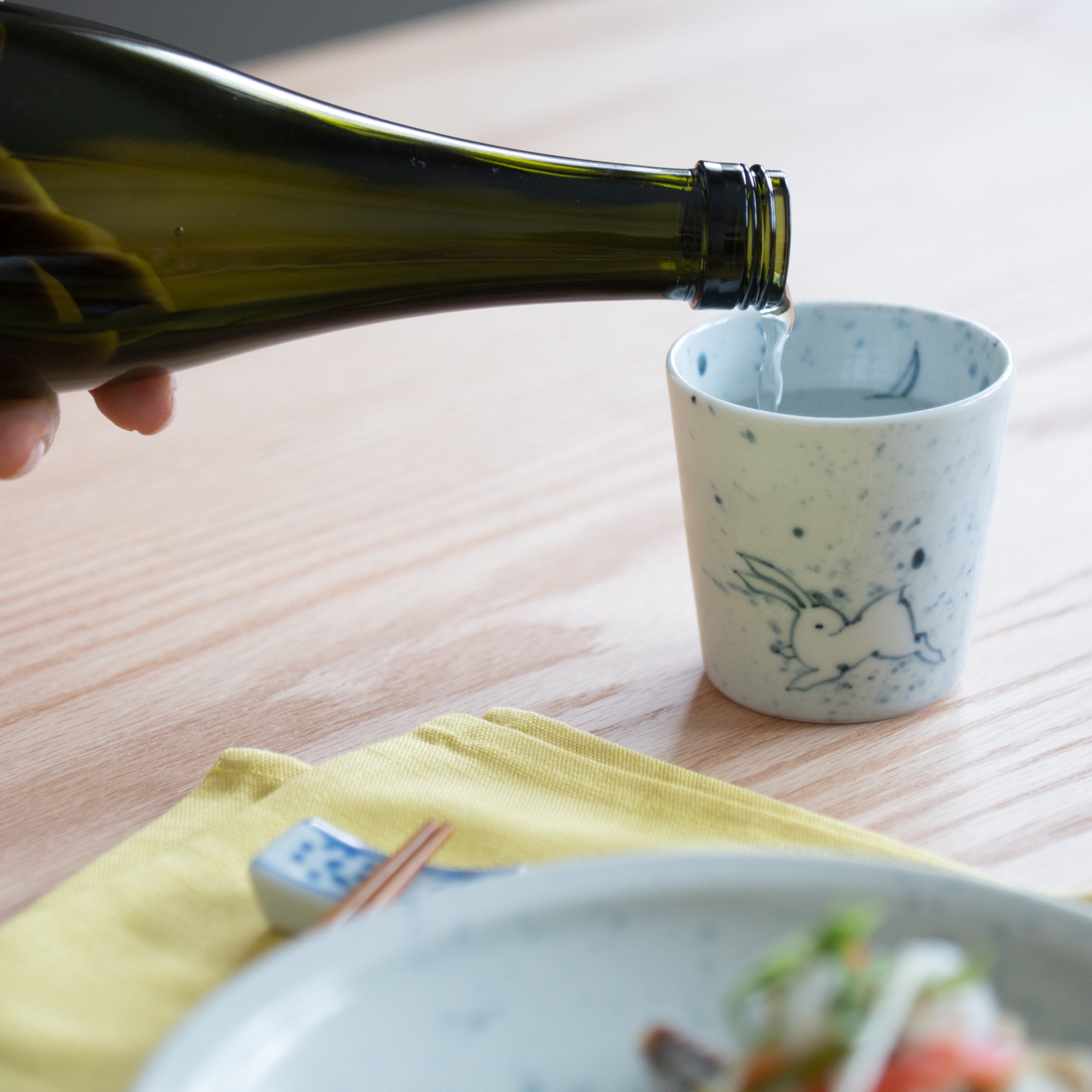
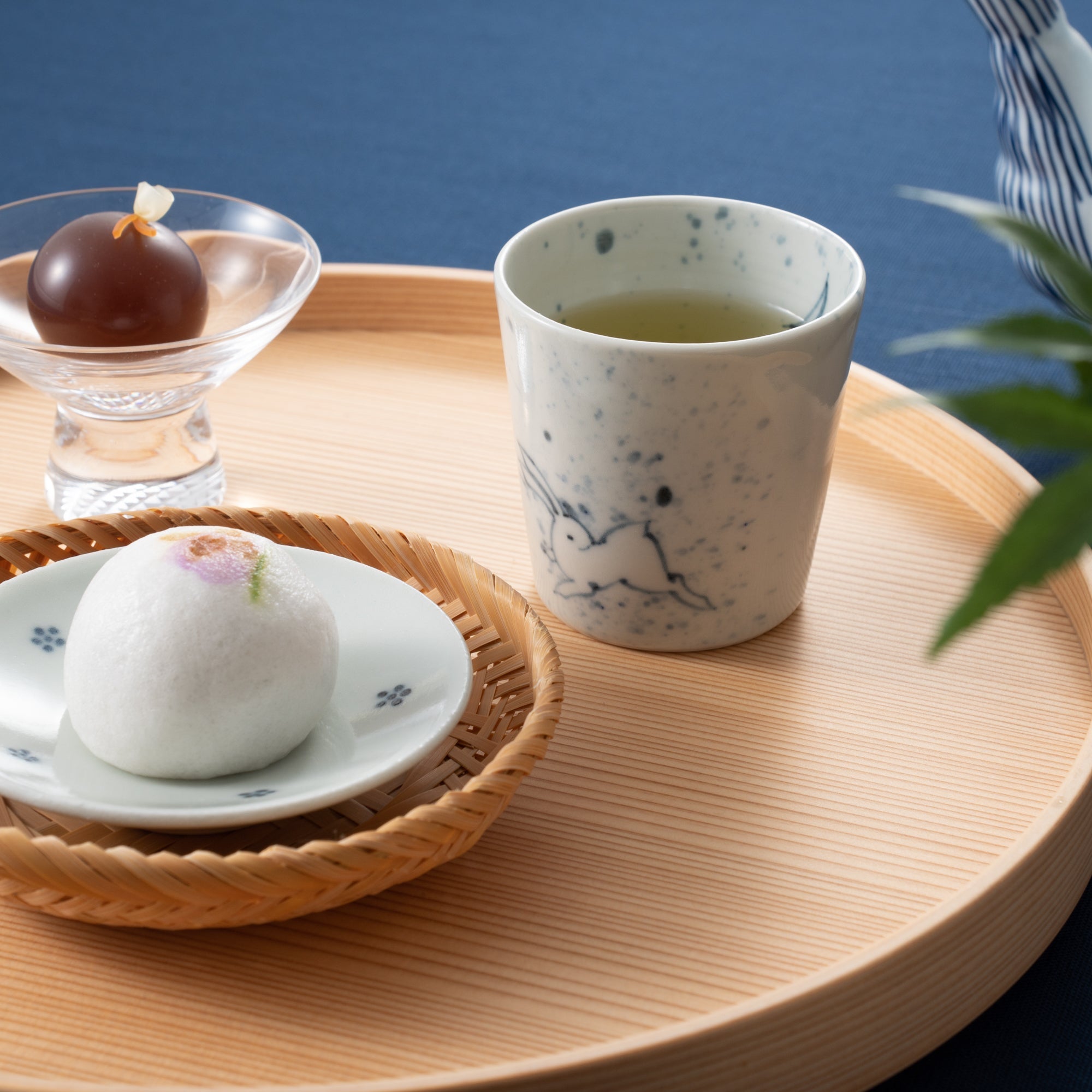

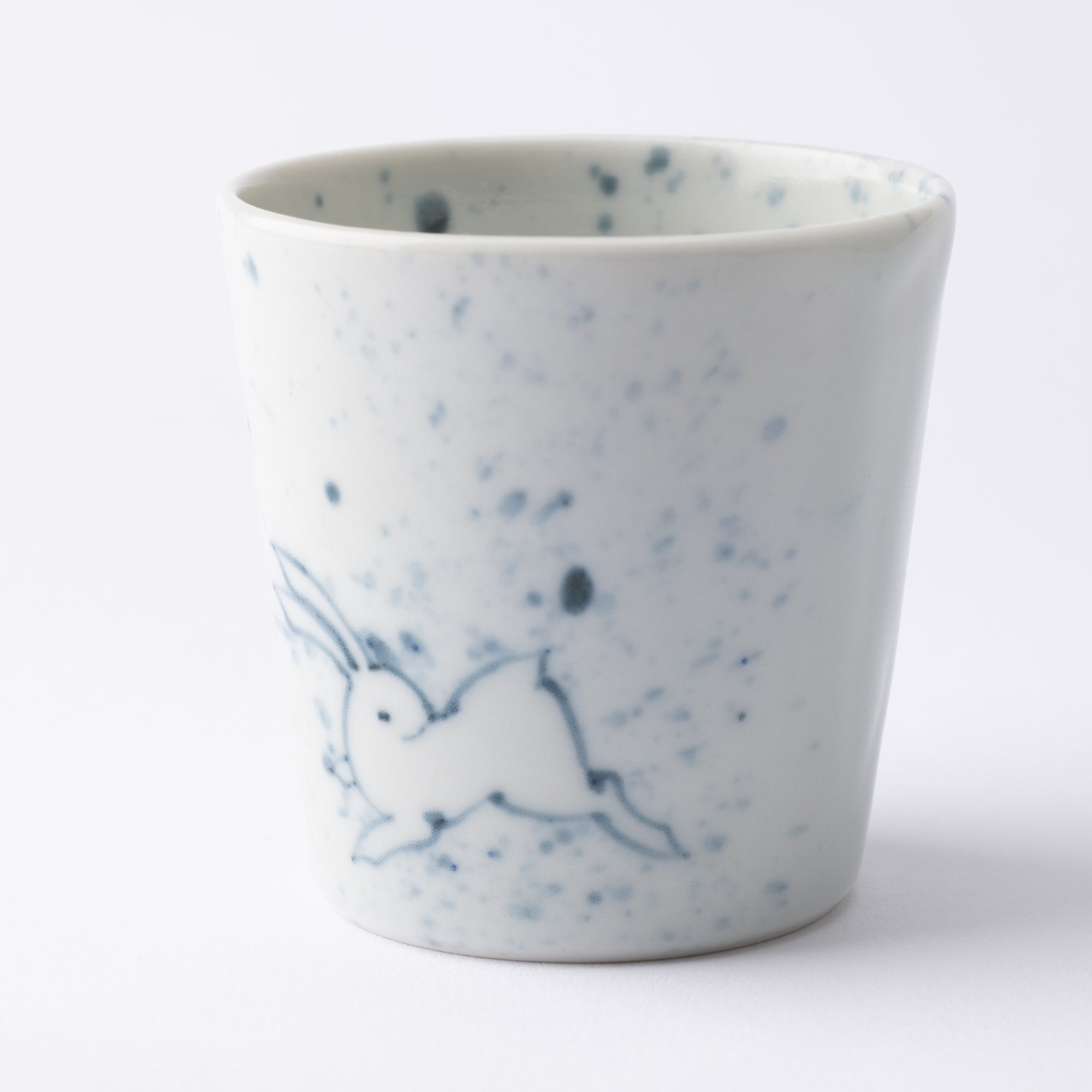

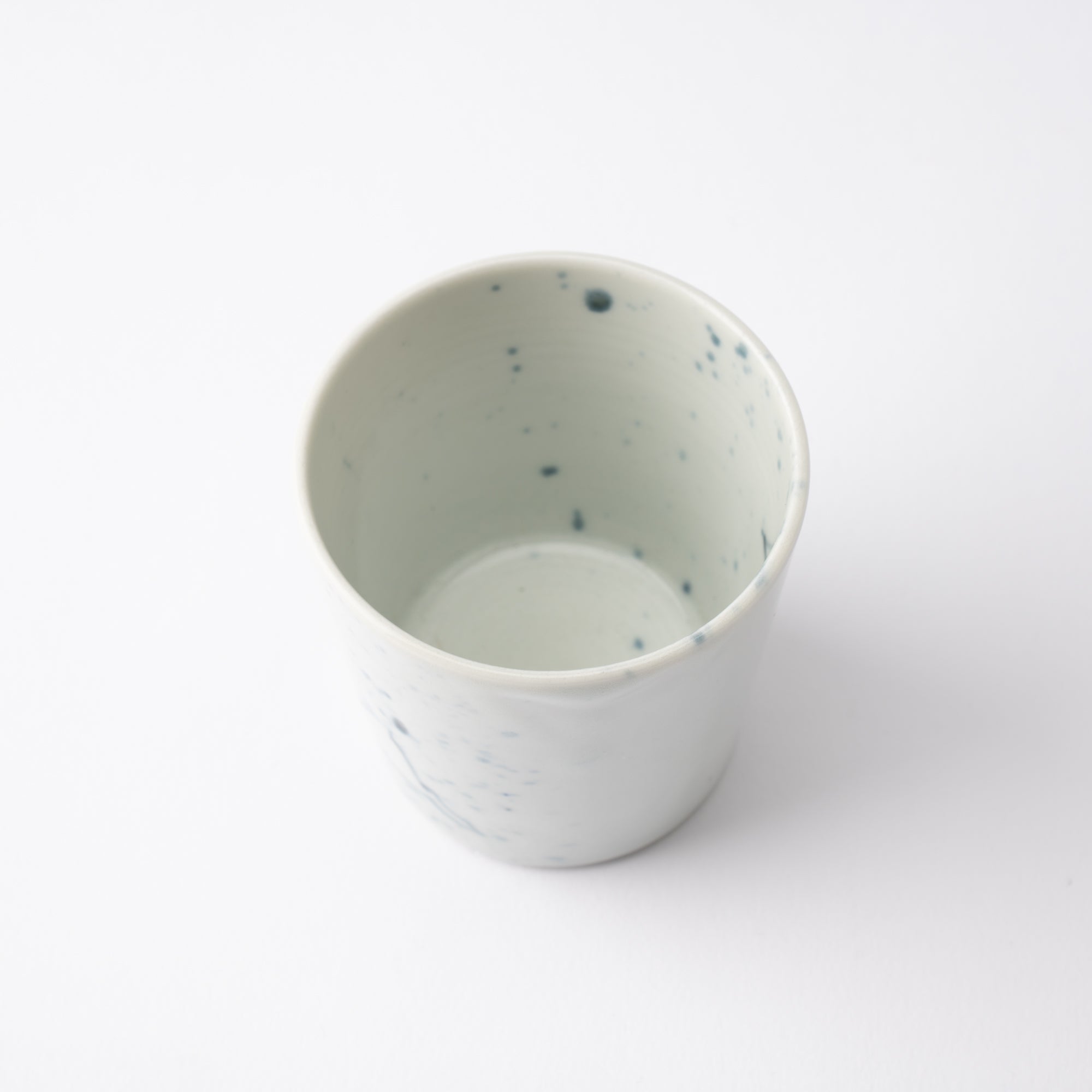
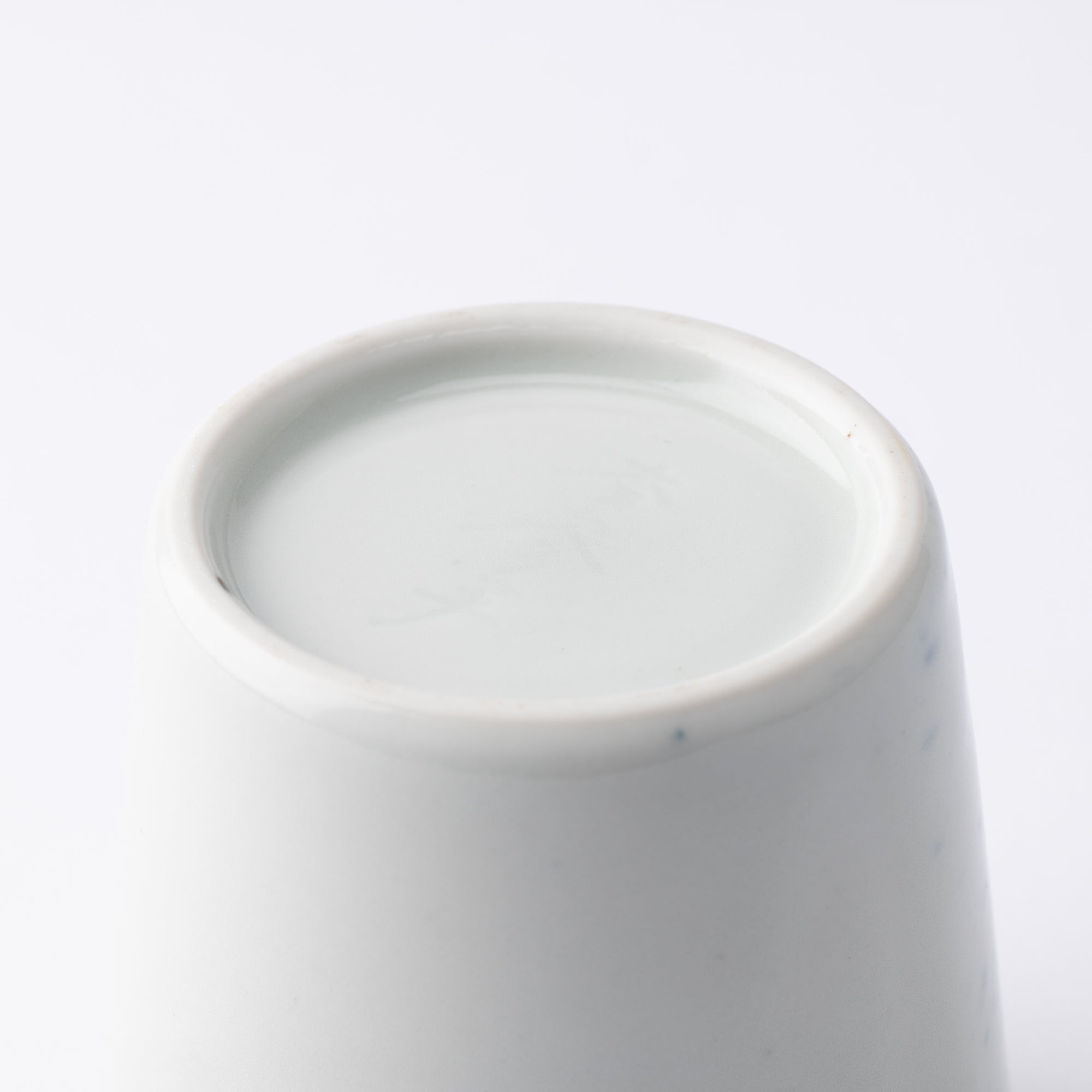

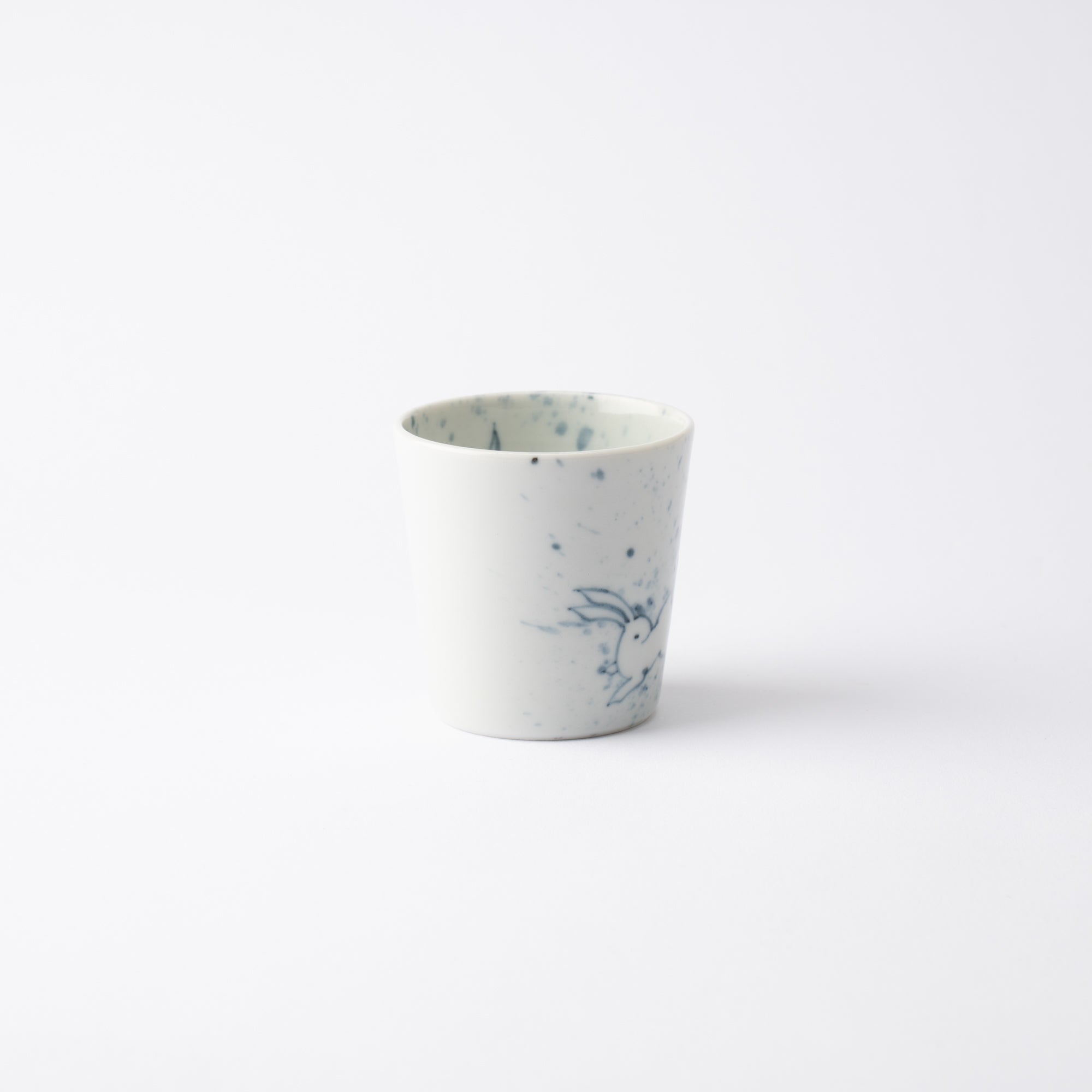
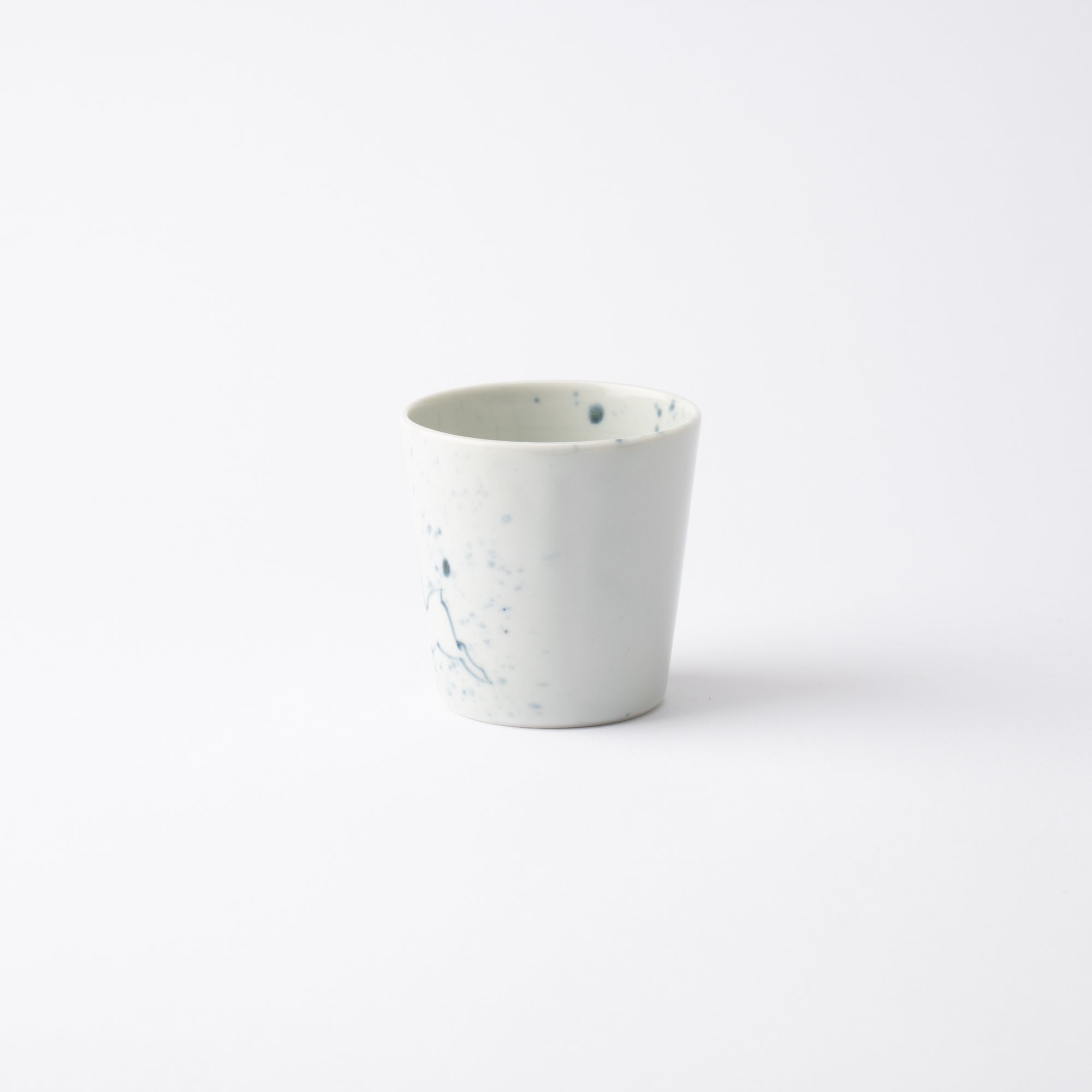
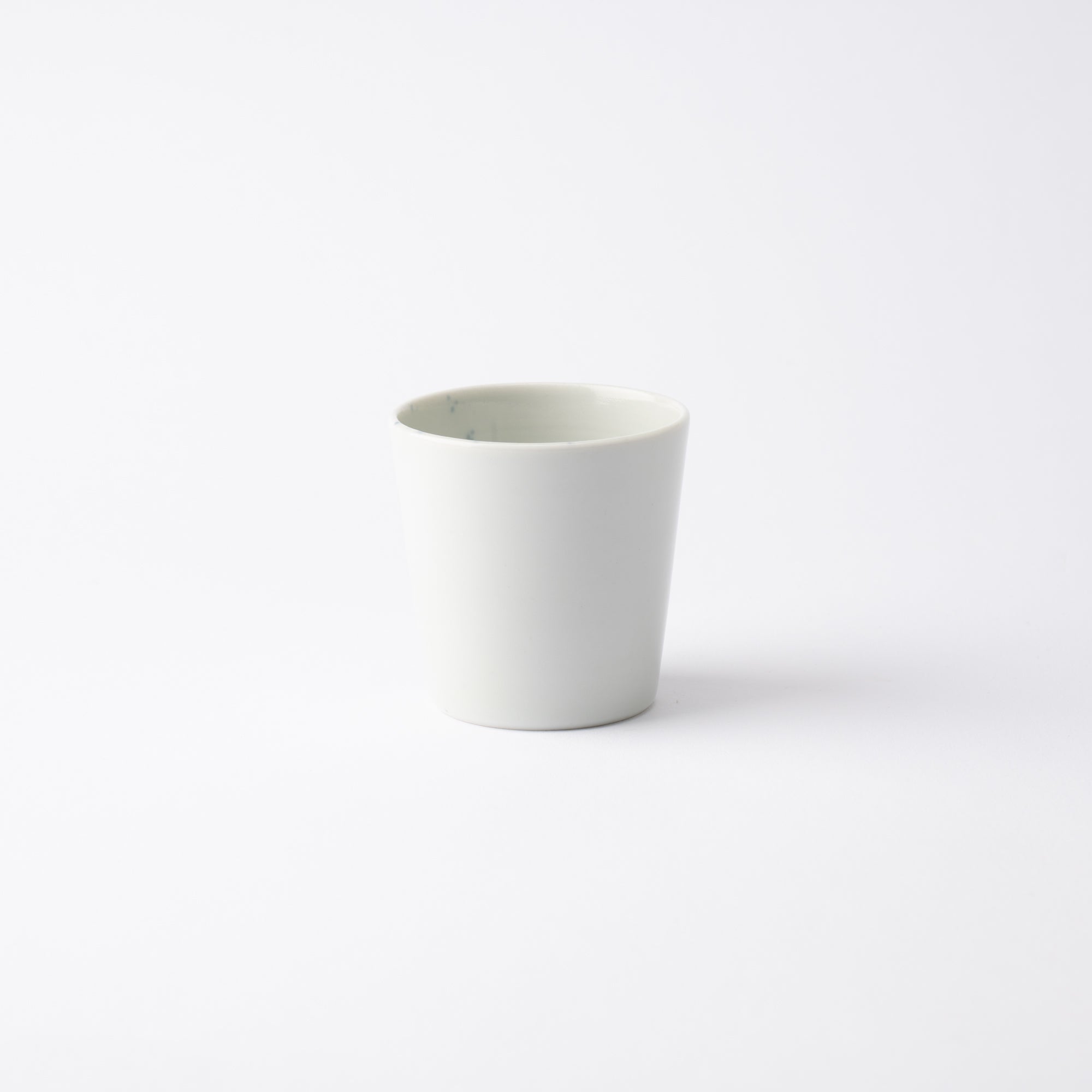
Japanische Teetasse mit Mondhasenmotiv
Estimated Shipping Widget will be displayed here!
Diese japanische Teetasse wurde im Le Sanpei (Yi Sam-pyeong) Kiln gefertigt. Sie wurde auf der Töpferscheibe geformt und zeigt das handgemalte Muster eines Kaninchens, das über kraterartige Flecken auf dem Mond hüpft und so eine unbeschreiblich bezaubernde Atmosphäre schafft, die die Herzen der Betrachter beruhigt.
Dieses Design entsteht, indem man ein Papiermuster in Form eines Kaninchens verwendet und Tinte in einen Sprühnebel bläst, indem man auf die Spitze eines in gosu, blaues Pigment, um die Form eines Kaninchens zu erzeugen. Diese Technik heißt Fuki-sumi (Sprühtinte), gelten als einige der charakteristischen Produkte von Le Sanpei (Yi Sam-pyeong) Ofen.
Im Gegensatz zu den direkt mit dem Pinsel gemalten Mustern weist diese Technik keine Umrisse auf und ist ein gutes Beispiel für den unkonventionellen Stil der frühen Imari-Keramik.
Bei frühem Imari sind die unterglasurblauen Muster einfach und oft großzügig mit Gosu bemalt. Beim Brennen wird die Grundfarbe der Ware leicht getönt und erhält ein halbglänzendes Aussehen.
Obwohl es ursprünglich zum Einfüllen von Soba-Dip-Sauce gedacht ist, können Sie es auch für Getränke wie Sake verwenden, Shochu, Tee und so weiter.
EINZELHEITEN
| Quantity | 1 |
| Size | D 6.9 cm (2.7 in) x H 6.5 cm (2.6 in) |
| Capacity | 100 ml (3.4 fl oz) |
| Material | Porcelain |
| Microwave | Yes |
| Dishwasher | Yes |
Hersteller / Marke
Im frühen 17. Jahrhundert entdeckte der koreanische Handwerker Yi Sam-pyeong, auf Japanisch Le Sanpei (auch Ri Sanpei geschrieben), in Izumiyama, Arita, Töpferstein. Dies führte zur Herstellung des ältesten Porzellans Japans, das heute als Arita-Ware bekannt ist. Er gründete auch Le Sanpei Kiln, der vier Generationen lang in Betrieb war, bevor er geschlossen wurde, sein Name und sein Vermächtnis blieben jedoch bestehen.
Im Jahr 1920 wurde der Ofen von einem Nachkommen in der 13. Generation wiederbelebt, der seitdem in Betrieb ist. Unter der Leitung des Ofenmeisters in der 14. Generation lebt die außergewöhnliche Porzellankunst von Le Sanpei bis heute fort.
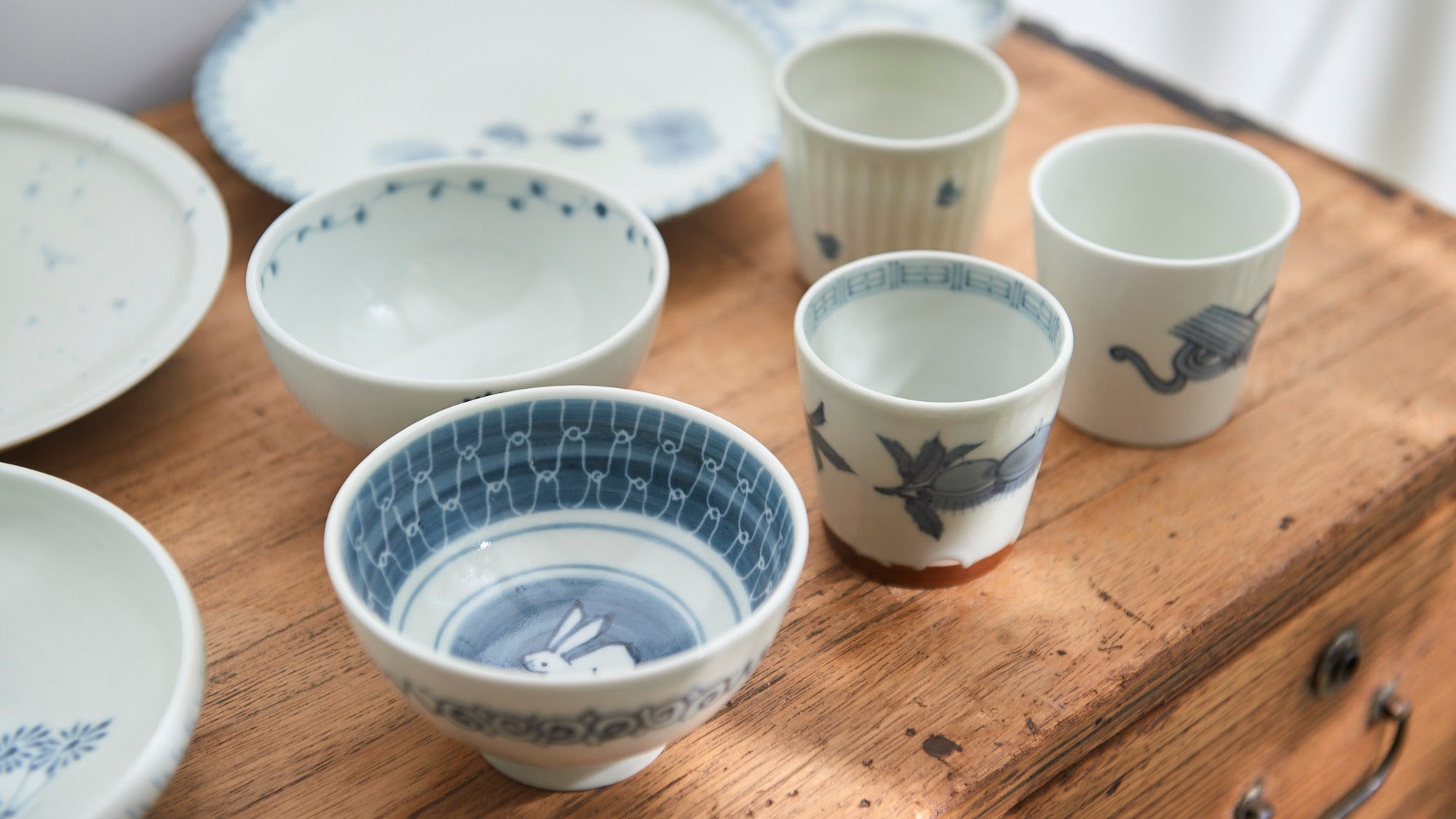
Kunsthandwerk
Arita-Ware wird in der historischen Stadt Arita in der Präfektur Saga hergestellt und gilt als das traditionsreichste Zentrum der Porzellanproduktion in den Annalen der japanischen Geschichte. Charakteristisch für die ätherische, durchscheinend weiße Oberfläche, die mit lebendigen Malereien verziert ist, hat sie das Porzellanhandwerk in ganz Europa nachhaltig beeinflusst.
In Japan genießt Arita-Ware als prestigeträchtige Marke hohes Ansehen und die Stadt Arita gilt als typisches Produktionsgebiet.
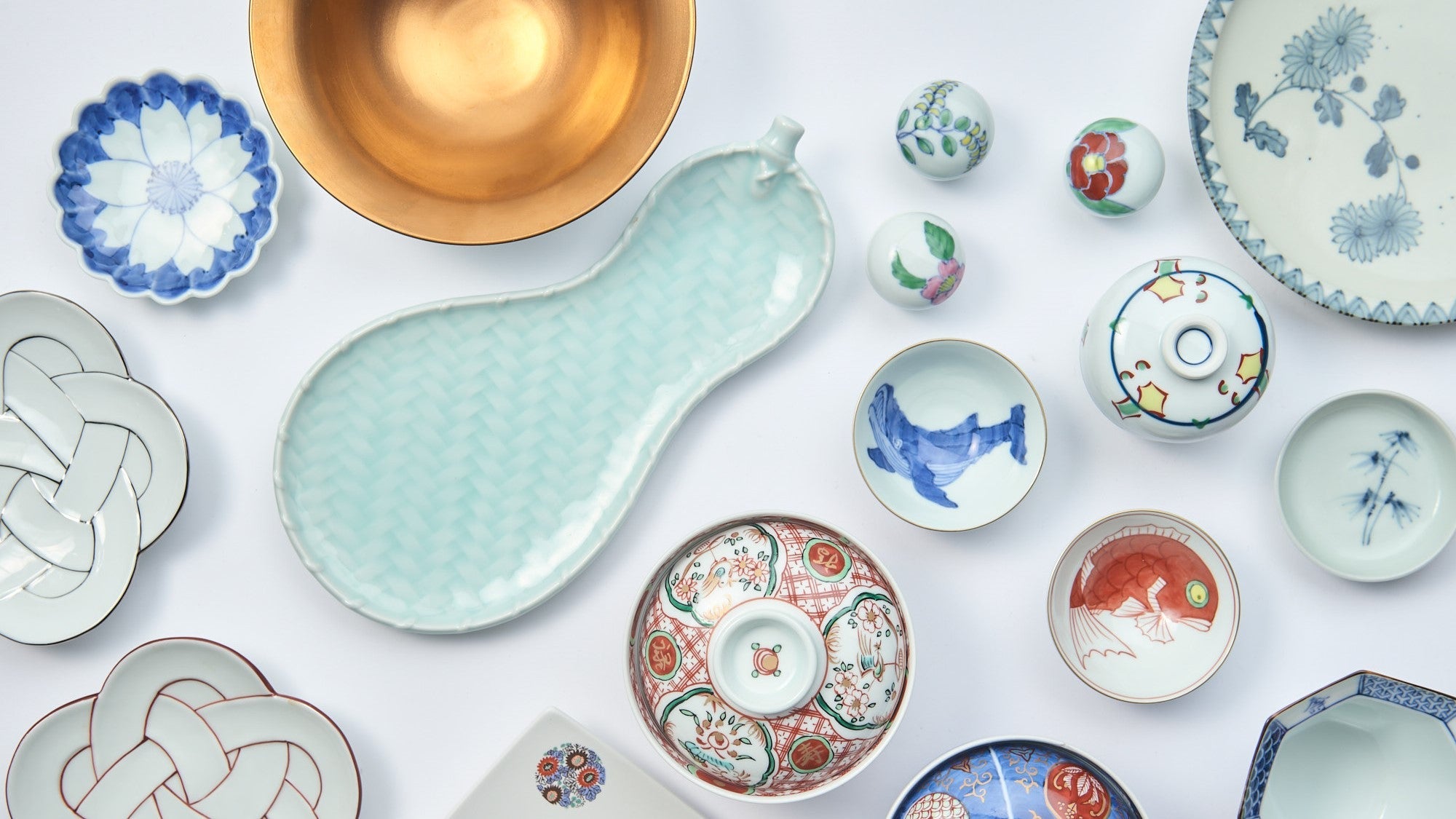
Anmerkungen
Optionen auswählen













Estimated Shipping Widget will be displayed here!
Japanische Teetassen
Wir haben sorgfältig eine Sammlung japanischer Teetassen aus ganz Japan zusammengestellt, um Ihre ruhige Teestunde zu verschönern. Diese Teetassen sind nicht nur optisch beeindruckend, sondern auch praktisch und somit perfekt für den täglichen Gebrauch.
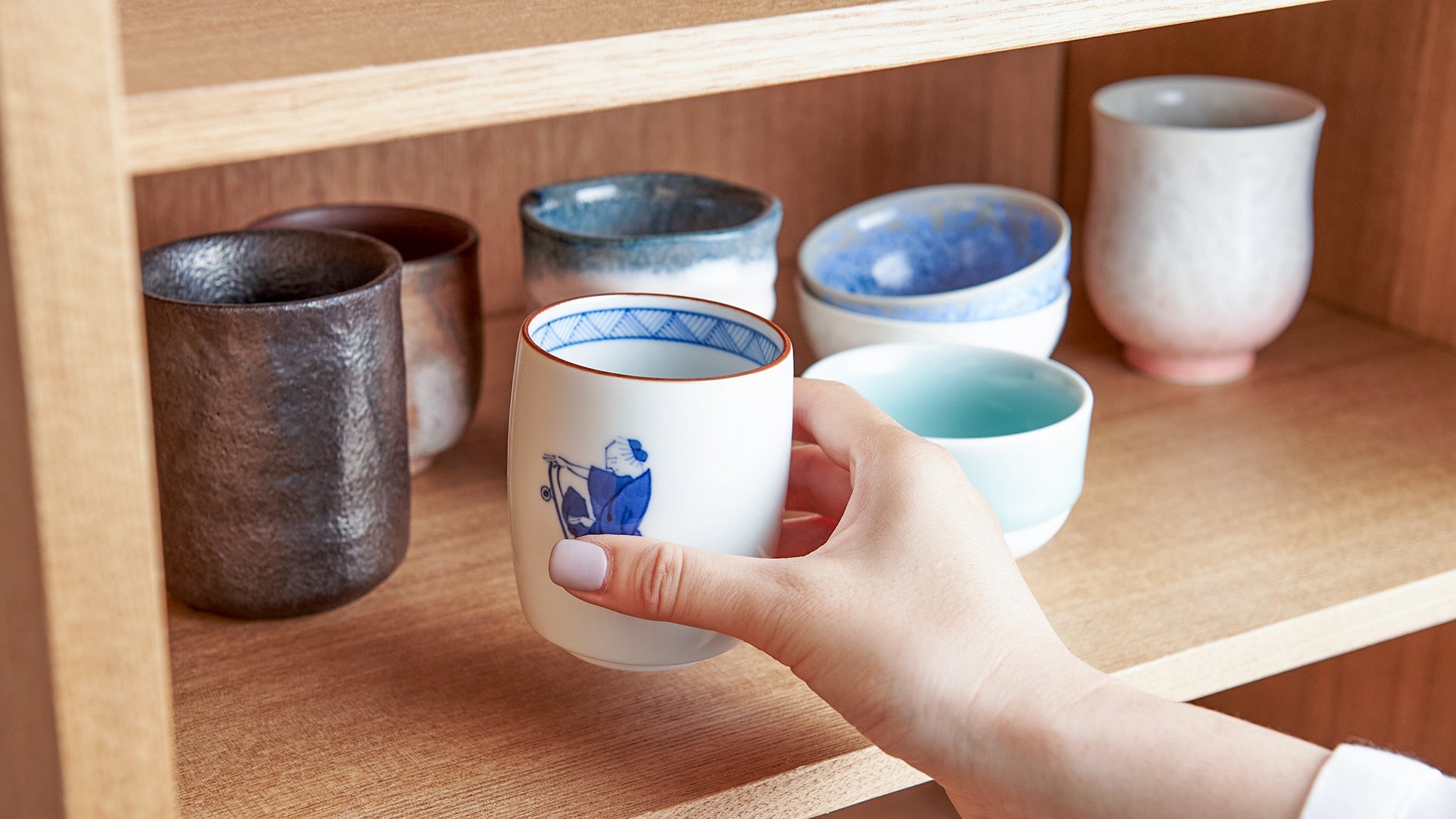
Sometsuke
Sometsuke ist eine dekorative japanische Töpfertechnik, auch bekannt als blau-weiße Keramik. Dieser klassische Stil wird weltweit für seine Eleganz geschätzt. Wir bieten eine große Auswahl an blau-weißen Tellern, Schüsseln, Trinkgeschirr und vielem mehr.
Die optisch ansprechende Farbgebung aus kobaltblauem und weißem Porzellan von Sometsuke bringt die Schönheit von Speisen zur Geltung und lässt sich problemlos mit einer Vielzahl von Geschirr kombinieren. Die feine, glatte Oberfläche und das leichte Tragegefühl sorgen für ein noch angenehmeres Benutzererlebnis.
